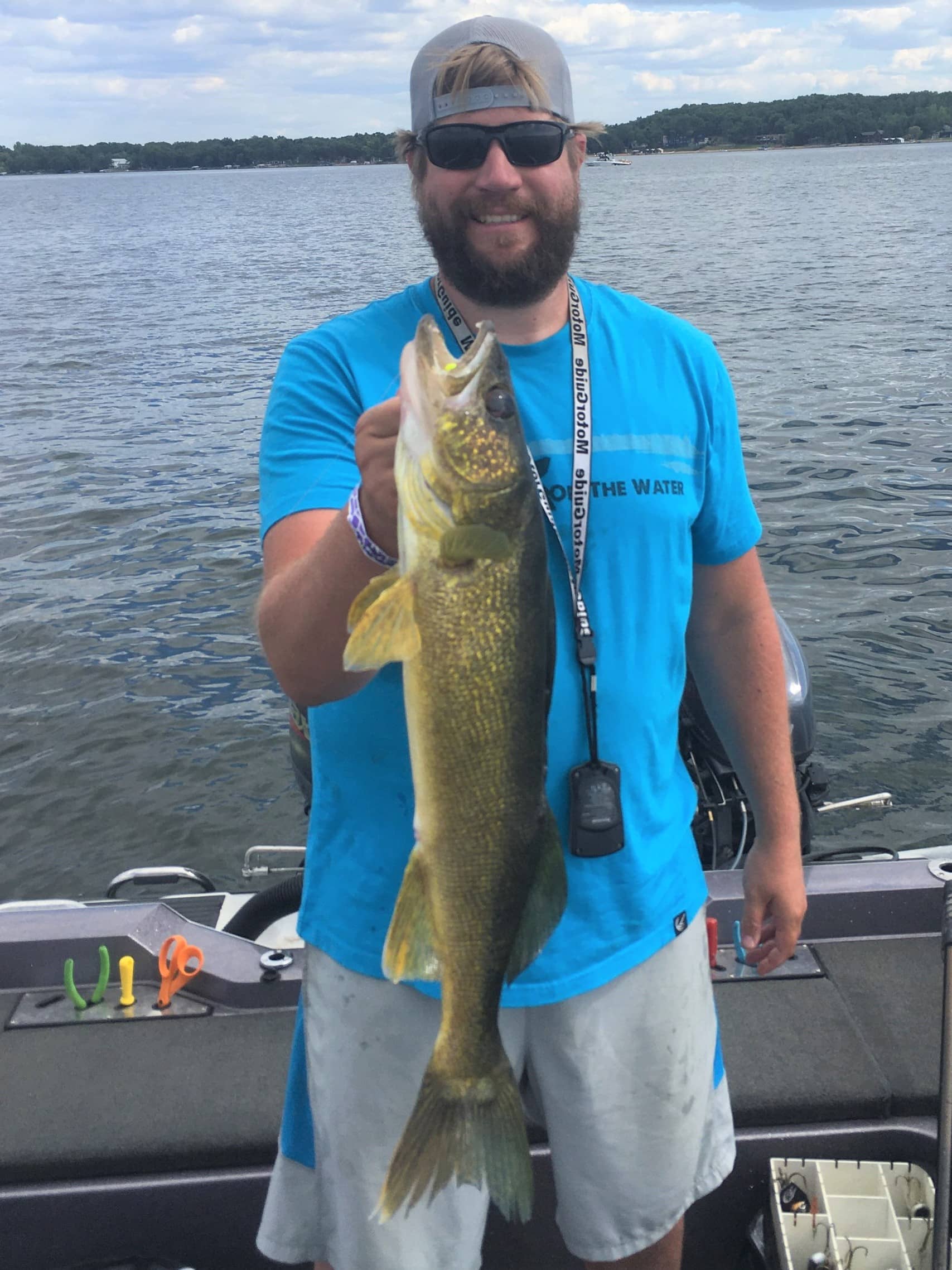
Speeding things up, like working swimbaits aggressively around summer weeds, can produce walleyes on the hottest of days. Simonson Photo.
By Nick Simonson
No other season seems to go by as quickly as summer. In these northern tiers, the warmth often feels like it’s here and gone in a matter of days, as opposed the three months the seasonal calendar actually allots. With the heat and the warming of the region’s waters – the fish too move quickly and capitalizing on their chase for food that mirrors our own sprints from May graduation buffets, to Fourth of July barbecues, to Labor Day’s last hurrah pig roast on the beach – is key in finding summer success with the seemingly limited time we have. What follows are some tips to kick angling into high gear as the summer allows.
Fast & Follow-Up
Fish, being the cold-blooded creatures that they are, generally become more active and more aggressive as the water temperature around them rises. Knowing this biological aspect of most species – save for a few such as stocked trout that go deep and perhaps northern pike in the dog days of the season – will allow for a faster presentation that they were less likely to chase in the colder waters of spring. Burning lures like spinnerbaits for bass, or trolling crankbaits to cover water for walleyes can trigger massive bites. Even when the fish are a bit skittish and short striking, it’s easy to go back and connect.
Consider keeping a second rod rigged with a bass jig or tube when a smallmouth or largemouth misses a quickly reeled lure. Just pitch the slower offering back in the general area of the first retrieve and work it methodically through the strike zone. The same goes for walleyes. Stop and work an area where a crankbait connected with one fish, using a jig and plastic or a jig and minnow combination. Odds are, the rest of the school is around, and if one walleye was hungry enough to smash a crank, the others will strike something worked a bit slower.
Summer Growth
In the aquatic world, things must grow fast in a limited time if they want to survive the leaner months to come, so be aware of the changing prey structure as the season progresses. Smaller crankbaits may be the ticket to big bites in June, but by August many of those prey items may have tacked on an inch or two and imitating slightly bigger baitfish will be the ticket to connecting with larger predators. Along with the changing size, be aware of seasonal shifts in the types of prey available to fish.
While tadpoles in May are about the size of a pencil eraser, July brings them to a full-on froglet stage and especially in wet seasons like this spring was, there will be a lot of them for catfish, bass and even walleyes to gorge on as summer starts to wane. Pay attention to those places where grassy shores and swampy areas adjoin a river or lake and look for these larger morsels to comprise a prey base for fish. Keep tabs on insect and crustacean sizes as well in late summer, when dragonfly nymphs and crayfish get a bit bigger and end up on the menu for a variety of species.
Things move quickly in summer, and not just the days that zip by on the calendar. Adjust presentations to give active fish a chase they can complete and watch for bigger prey to be on the menu as the season progresses. There’s lots to eat as well, so know what fish are keying in on by observing the changes summer brings to any lake or river and offer baits that match the forage in type as well as size and speed. Keeping these items front of mind as the action and summer heats up will keep fishing fast and the success coming until things cool down in fall.
